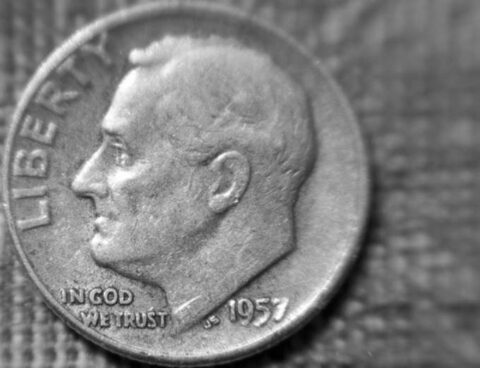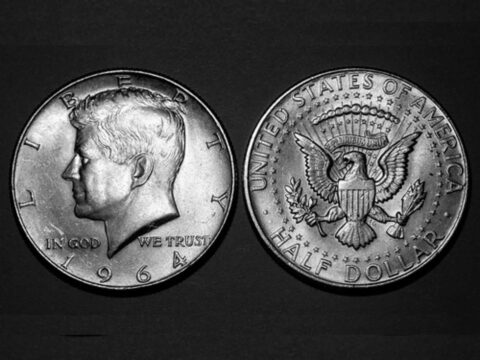
Believe it or not, it is still possible to find a coin worth money in circulation.
Now I’m not talking about the kind of money which may wind up footing a college tuition bill — but each of the coins below are worth considerably more than face value.
The coins in this article are not rare coins, and they are not error coins. While such coins can turn up in circulation, it is only on an extremely rare occasion that any coin will be worth hundreds of dollars.
Therefore, I want to focus on more ordinary coins which you may actually locate in circulation with a bit of hunting.
How To Find Valuable Coins In Circulation
I can personally attest that the best way to find these old coins in circulation is to buy many rolls at your local bank and then search through them.
There is also a fair chance that you may already have a coin worth money in your home or possession without even knowing about them being there.
Of course, be sure to ask before poking into your dad’s cigar box of old coins or mom’s jar of loose change!
Lincoln Wheat Cents (1909-1958)
Hundreds of millions of wheat cents exist. These old Lincoln cents have long interested collectors and non-collectors, and many of them are worth more than face value.
While rarities like:
- 1909-S VDB cent
- 1914-D cent
- 1922 plain cent
- 1931-S cent
- 1955 Doubled-Die cent
…are worth hundreds of dollars each, most are worth 25 cents to $1. Those made from 1934 on are worth 10 to 25 cents each.
While Lincoln pennies are not particularly valuable alone, these common wheat cents can occasionally be found in rolls. If you can scrape together a full roll of 50 wheat pennies, it should be worth at least $3. Not bad for pennies, huh?
Jefferson Wartime Silver Nickels (1942-1945)
During World War II, the U.S. government saved nickel for the war effort, so the U.S. Mint was authorized to strike 5-cent coins with a combination of 56% copper, 35% silver, and 9% manganese.
Jefferson wartime silver nickels are presently worth $1 to $1.50 each in typical grades.
Be sure to look for a large mint mark over the dome of Monticello on the reverse (tails side) to easily distinguish wartime nickels from regular Jefferson nickels. You may find a coin worth money!
Roosevelt Silver Dimes (1946-1964)

After the last Mercury dimes rolled out of the U.S. Mint in 1945, the nation honored our 32nd President, Franklin Delano Roosevelt, by placing his image on the obverse (heads side) of the dime.
While the Roosevelt dime would eventually be made with a copper-nickel composition, the first 18 years of production saw the Roosevelt dime being made with a 90% silver content, making the coin worth money.
Silver Roosevelt dimes rarely turn up in circulation or bank rolls, but many were kept behind in collections, drawers, jars, and boxes.
Worn silver Roosevelt dimes are worth at least $1.50 to $2 each in the average silver market. Uncirculated pieces (which must have no wear and will likely be found in old bank-wrapped rolls) can be worth $3 to $5 each and up.
Washington Silver Quarters (1932-1964)
Like the Roosevelt dime, there once was a time when Washington silver quarters once contained a 90%-silver composition.
Silver Washington quarters have become increasingly popular in recent years due to the collector interest in the quarter denomination particularly because of:
- 50 States Quarters
- District of Columbia & United States Territories Quarters
- National Park Quarters (which will begin a multi-year run in 2010)
1932-D and 1932-S quarters are among the most valuable of the non-error Washington silver quarters. The 1932-D and 1932-S can bring in $200 to $300 and up in higher-level circulated grades.
However, most Washington silver quarters are worth between $3 to $4 each in typical worn grades. Be on the lookout, because Washington silver quarters still can pop up in circulation (although rarely). It is more likely that you will find one (or more) in rolls, collections, drawers, or an old jar of coins.
Kennedy Silver Half-Dollars (1964-1970)

Following the assassination of John F. Kennedy in November 1963, the U.S. government embarked on one of the swiftest coin design changes ever. By early 1964, the first Kennedy half-dollars were already reaching pockets and purses across the country.
These first Kennedy half-dollars in 1964 were 90% silver. When the composition of larger-denomination U.S. coins included a larger share of copper in 1965, the Kennedy half-dollar saw a reduction in how much silver it had. In fact, beginning in 1965, the Kennedy half-dollar was only 40% silver.
In 1971, the Kennedy half-dollar went to a copper-nickel format, as the dime and quarter did in 1965. A 90% silver half-dollar is worth around $5.50 to $6, while a 40% silver half-dollar can bring in a cool $2.50
Kennedy half-dollars with silver content, while scarcely ever found in circulation channels anymore, occasionally turn up in rolls from the bank. Don’t forget to check out the usual coin hideaway places in your home, too. You may find a coin worth money!




